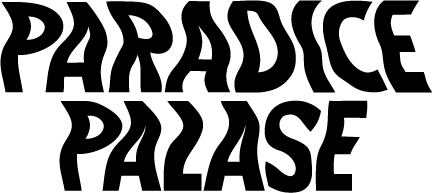Sadie Monroe
Sadie Monroe’s practice aims to examine the multiplicities derivative of social, frequently capitalistic constructs. Her dimensional, often collaborative formations intend to interject perceived, daily reality to emerge questions of what is, what can be, what will be. These investigations materialize as methods of practice, body sculpture, installations, paintings, multimedia, and happenings.
“Biothrone” wearable piece work in progress
PP: Walk us through a typical day in your studio or generally through your process to make new work.
SM: I think big. I don’t know how not to. A small inkling turns into a note, turns into a poem, turns into a doodle, turns into a painting, turns into a textile piece, turns into a series, turns into very large things that cannot fit inside my apartment…which is where my studio is. Before I plunge into creation though, I spend a good amount of time gathering knowledge, inspiration, materials etc. I begin submerging myself into a topic’s philosophies, environments, histories, contexts, and skill sets. My walls are covered with writings and images. Theoretical engagement unfolds into visual, material states. Forms, actions, and experiences grow out of process—writing, play, and medium manipulation—as I attempt to realize the objective and subjective properties at the crux of my observations.
“Biothrone” wearable piece work in progress
PP: What motivates you to make art?
SM: I’m motivated by so many things to make art. It depends on the day, the year, my mood. I make it out of curiosity, to explore and learn, to express myself, to question my surroundings, to question myself. I can make it out of fear, anger, excitement. I push things and myself to see where we go, how far we can go, what can happen. I never want to stop doing that.
PP: What role do you think artists have in society today? What role should they have?
SM: Being an artist is being an activist. Living the life of an artist is defiant in itself. It’s a choice of how you live. Often, it’s a hard choice to stick with. If you don’t yet have the ability to work on your art full time, you're constantly figuring out all the times you need to work on it outside of your job(s)...which is essentially all of the time. For me, pursuing my creativity has meant fewer relationships with partners, periods of isolation, a lack of savings or accruement of wealth. As a result, I likely won’t have a kid. It’s getting too late and I don’t have the resources or the time to provide. This didn’t feel like an active choice I made in my twenties, but it’s become a result of my pursuit now that I’m in my mid thirties. I have to deal with that on a personal level. However, I still believe being an artist is worth continuing the journey. And let’s say an artist happens to be in the fortunate position to create full-time, they’re still most likely not making or seeking to make millions of dollars off of their work. They’re likely choosing to live a life within their means. And what that typically means is they’re resourceful with materials, they’re not living in a mansion, they’re not glued to the tv or forever-following social media. What they’re doing is living a more sustainable life, paying attention to the world around them for inspiration, and working to expand their understanding of what it means to live through slow, meaningful exploration and practice.
“This Is Water” by Sadie Monroe
PP: What is one goal you are aiming to achieve this year for your art practice?
SM: Within the next 12 months, I’d like to complete the collection I’m working on and exhibit it, whether that’s through a gallery or related opportunity, or something I front and put together myself.
“Blinking” by Sadie Monroe
“Has Her Dust” by Sadie Monroe
PP: Who or what has had the biggest impact on your creative practice?
SM: Beata Kania. She was a professor of mine in college. I had transferred from a southern university to an arts and media college in Chicago but had no idea what I was going to do there. I think I was initially enrolled as an entrepreneurship major and signed up for an entry-level fashion design course. I immediately became enraptured with Beata and her class. She showed me how to see, she taught me how to play, how to engage with material (fabric at the time), how to explore and experiment, how to observe and have a dialogue with my surroundings. Simultaneously she indirectly showed me a different way to live. A life full of creativity, full of joy, full of gratitude, full of presence, full of curiosity and empty of standardized American success.
To learn more about Sadie’s work, see her instagram and website.







